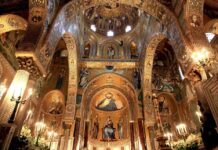Thousands of years ago, the Nile Valley Civilization was born in Egypt. It was a highly advanced civilization that existed for more than 4000 years. The grand structures built in Egypt during that period can still be seen today. As a result, tourists from all over the world come to Egypt to visit the ancient ruins. Similarly, there are many places of natural beauty in Egypt. From now on, information about 5 beautiful tourist events in Egypt is presented to you.
1). The Great Pyramids of Giza
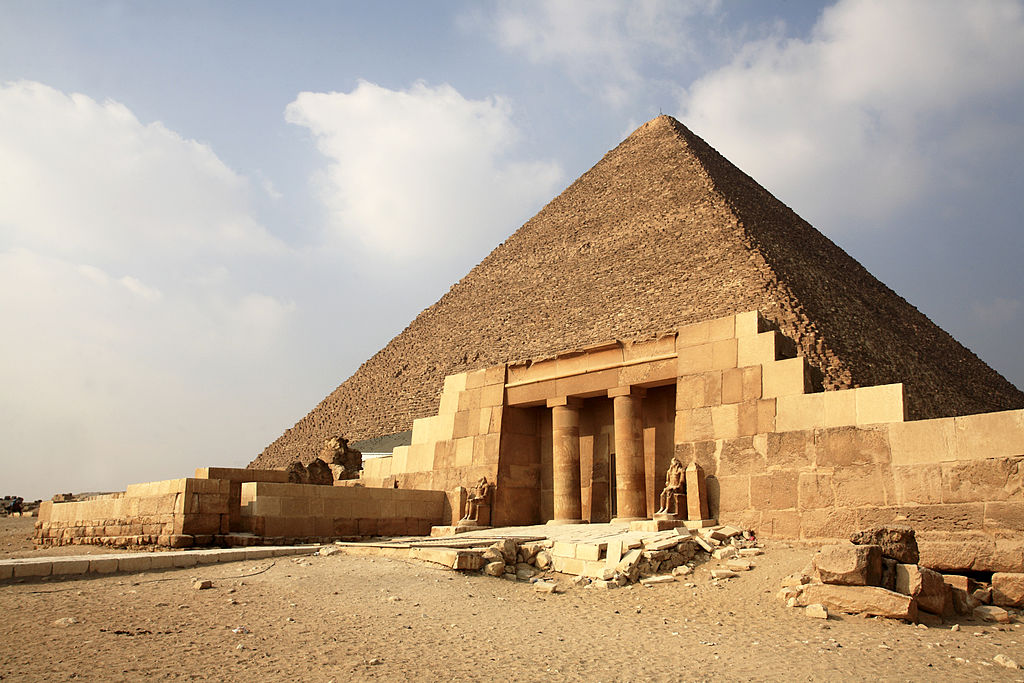
The giant pyramids of Giza, which belonged to the 7 wonders of the ancient world, are located in the Giza Valley, not far from Cairo, the capital of Egypt. More than 4600 years old, these pyramids were built to bury the bodies of the pharaohs Khufu, Khafre and Menkure. Among these pyramids, the Khufu Pyramid was the first to be built. It is the largest pyramid in the world with a height of 481 feet. It is also special that its base is spread over 13 acres. One side is about 756 feet long and it is also known as the Great Pyramid.
Old historical sources state that one of the remaining two pyramids in Giza was built by King Khufu’s son Khafre, and the other pyramid was built by King Khufu’s grandson Menkure. Among these great pyramids, it is believed that about 100,000 slaves were employed to build the Khufu Pyramid. Also, it took 20 years to create this using 2.3 million limestone blocks.
There is a wonderful connection between the Great Pyramids built in the Giza Valley and the Orion star pattern. It is because these three pyramids were created to coincide with the stars Alnitak, Alnilam, and Mintaka located in the belt of the Orians.
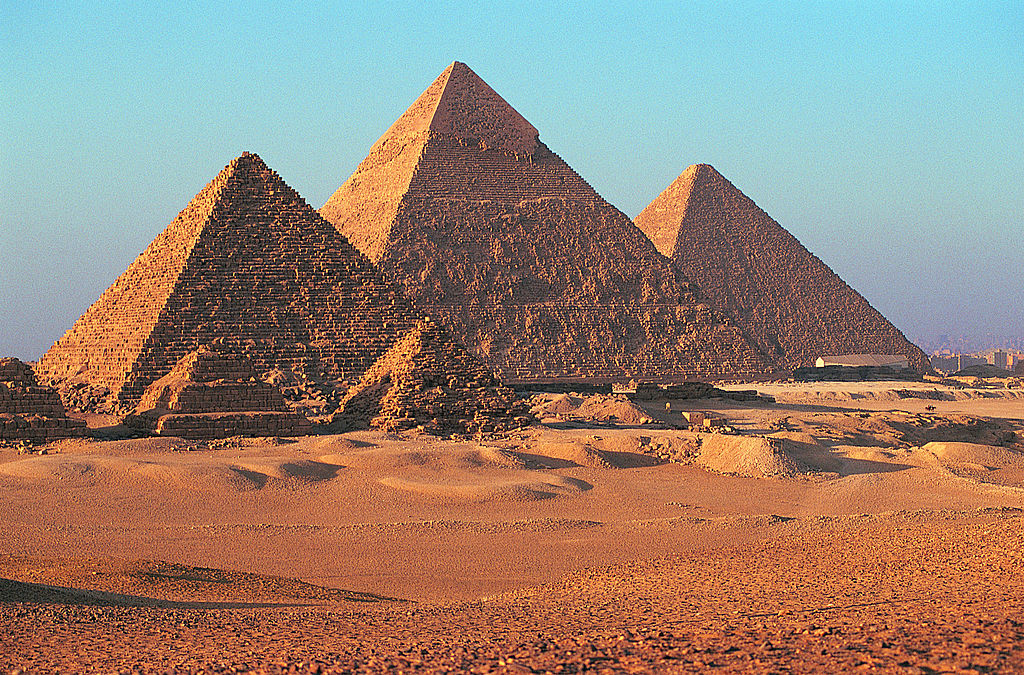
Also, there is an opinion that Ruwanveli Saya, Jetavanaramaya, and Mirisavetiya in Anuradhapura were built in conjunction with the stars Rigel, Mintaka, and Bellatrix in the Orayan star pattern. It is still a mystery today why the people who lived then created those designs in a way that aligned with the stars of the Orayan star pattern.
2). Abu Simbel temple
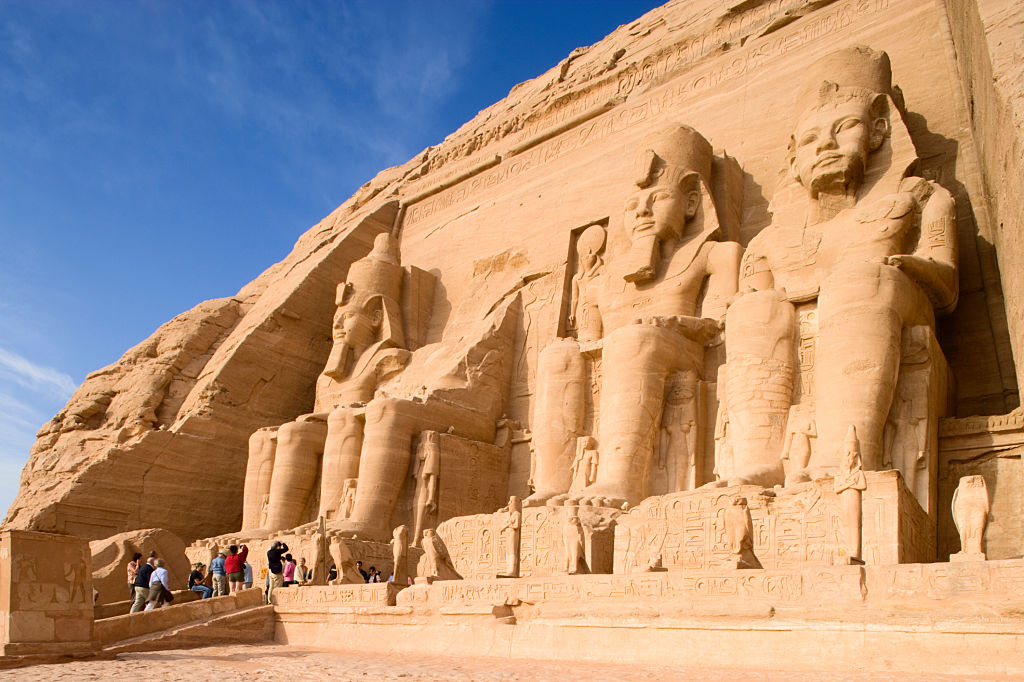
Ramses II is considered to be the last great pharaoh from Egypt. Known as a militant dictator, this king fought with neighboring states to further expand the Egyptian empire.
Among the battles he fought, the Kiddash battle against the Hittites is special. Ramses II, who was eager to attain divinity, built temples all over Egypt. As a result, the Abu Simbel Church was created around 1260 BC.
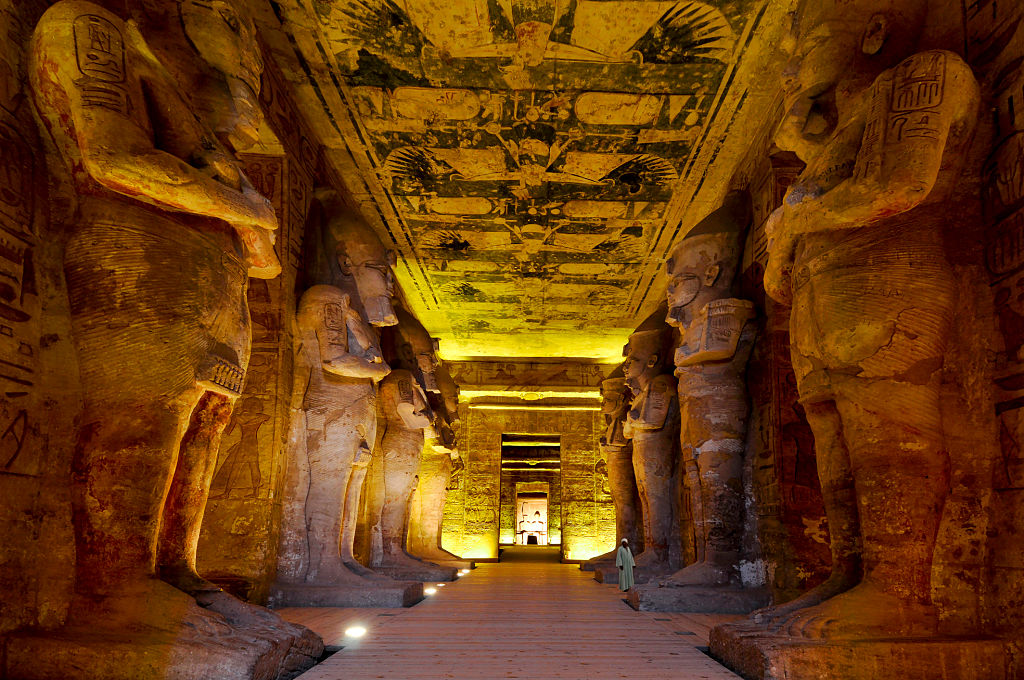
In front of the main temple dedicated to the god Ra, who was regarded as the sun god of the Egyptians, 4 beautiful statues of 67 feet each have been built. The statues depict King Ramses II.
The entrance gate of the main temple is built in such a way that on February 22nd and October 22nd of the year the sunlight falls on the three statues inside the temple. Archaeologists believe that it represents the date of birth and death of King Ramses II.

A smaller temple, 98 feet high and 115 feet wide than the main temple, has been built for Queen Nefertiti. 40 feet long and 92 feet wide, 4 statues of the king and 2 statues of the queen have been created in front of the temple.
Also, below the idols, small idols including their children have been created. The statues of the princesses are taller than the statues of the princes.
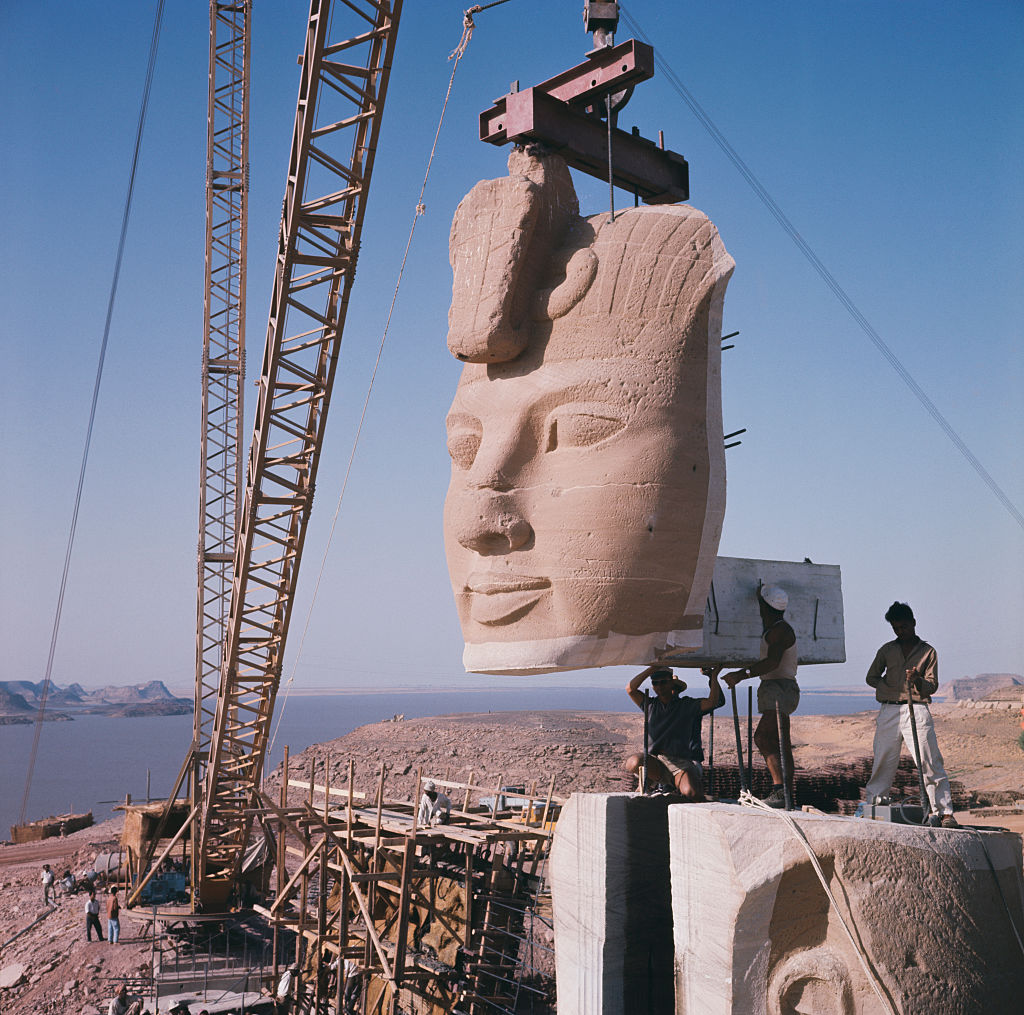
The Abu Simbel temple, which was created thousands of years ago, had to be removed from that place in the 1960s. That is because it was necessary to acquire land areas along the banks of the Nile River for the construction of the Aswan Dam. With the contribution of 3000 workers, it was possible to move the Abu Simbel temple to a safe place within a period of about 5 years.
It is said that about 42 million US dollars was spent for that work. Considering the importance of this sacred place, UNESCO declared it as a world heritage site in 1979.
3). Ras Mohammed National Park
Ras Mohammed National Park is another popular tourist attraction in Egypt. This is a marine reserve located near the Sinai Peninsula. By the 80s, fishing was done using dynamite in that area. As a result, marine life and coral reefs were destroyed. This marine reserve was established in 1983 to prevent that destruction.
Located in the vicinity of Tiran and Sanafir islands, this park covers 135 square kilometers of land and 345 square kilometers of sea. Underwater caves created by earthquakes can be seen in this park. Similarly, a mangrove ecosystem spread over 0.9 hectares is also located here.

A beautiful coral reef system can be found in the ocean part of this park. The area’s marine life includes starfish, sea urchins, sharks, dolphins, molluscs, reef fish, and turtles.
Many live. This wonderful ocean area is very popular among divers. That’s because this is an ideal area for visiting coral reefs.
Many tourists who come to Ras Mohammed National Park also have the opportunity to dive underwater and see the coral reefs. In addition to coral reefs and marine life, you can see something special in this ocean area. It was the shipwrecked ship Thistlegrom. It should be said here that the British cargo ship was sunk by German attacks during the Second World War.

4). White desert
The White Desert, located in the Farafra region of Western Egypt, is an area of natural beauty. Fragments of rocks that have been eroded for a long time under natural conditions are scattered all over this land. Considering the importance of this land, it was declared as a national park in 2002.
An area as large as 3010 square kilometers belongs to that park. These rock formations appear orange at sunrise and turn pink at sunset. It is a sight loved by many tourists who visit these deserts.
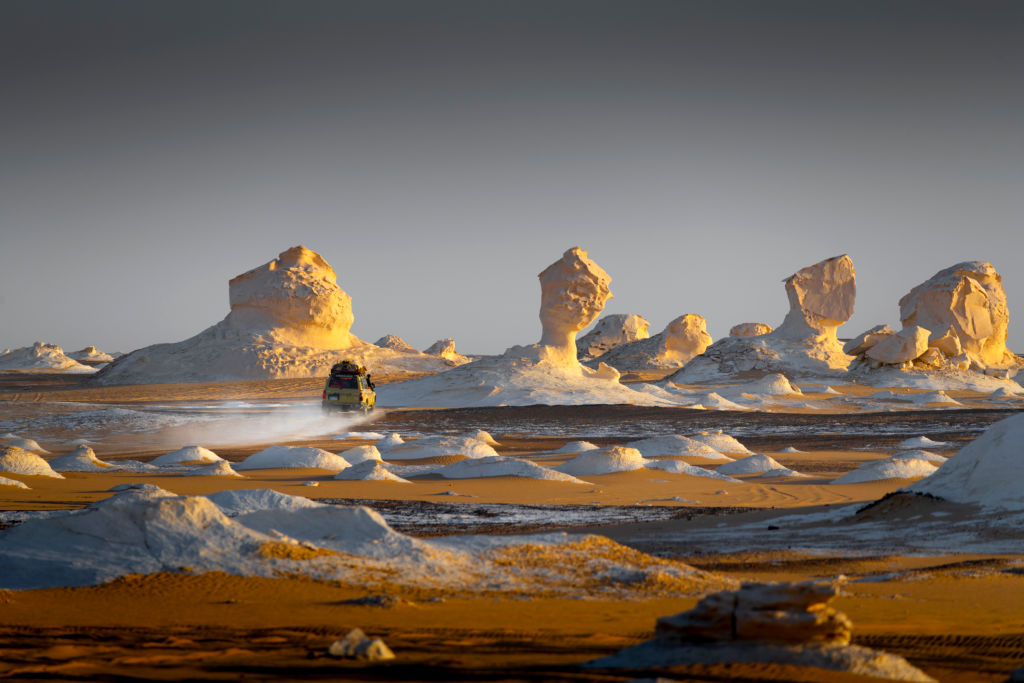
El Kes Abu Said, the highest point in this park, is located at a height of 353 meters above sea level. Dorcas and rime deer, Ruffles, Red, and Fennec deer, Barbary sheep, and sand cats live in the White Desert.
Therefore, the tourists who come here have a chance to see the animals while viewing the beautiful rock parts that have been eroded.
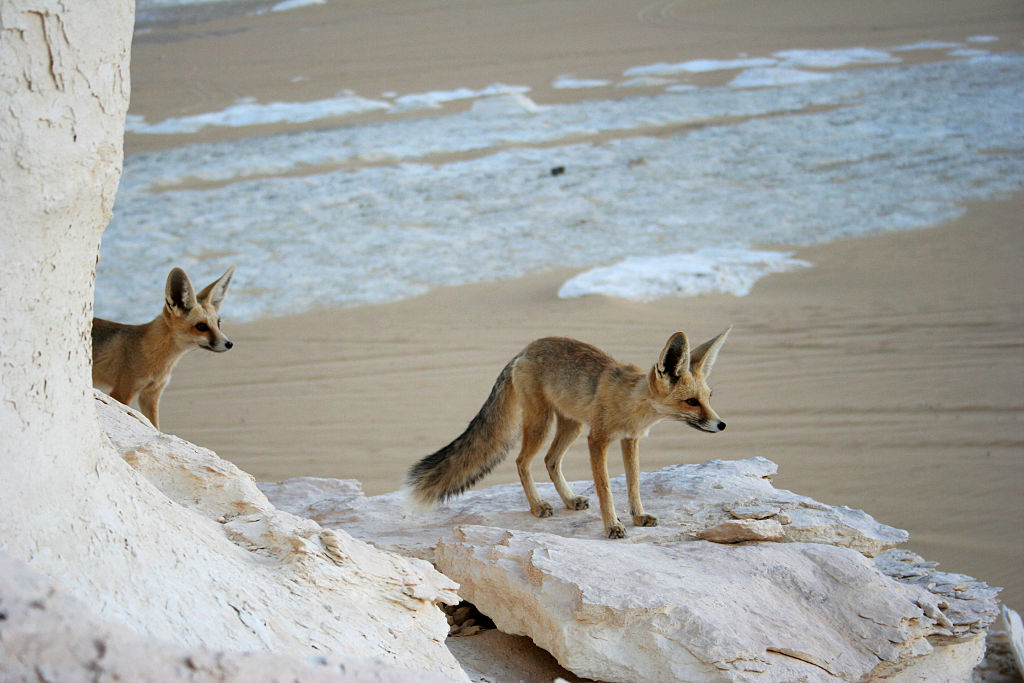
5). Whale Valley

Wadi Al Hitan or the Valley of the Whales is located in western Egypt. It got the name Whale Valley because a large number of whale fossils were found in that area. In the winter of 1902, whale fossils were first found in this area.
In that era, it was not possible to travel easily to this area, so there was no opportunity to carry out continuous research. Later, vehicles were created that could easily reach this land area. After that, various groups came to this area and engaged in research activities.
A large number of whale fossils were found there. The fossils provided many important evidences about the evolution of animals. In 2005, the UNESCO recognized the importance of this valley spread over an area of nearly 50,000 acres and declared it as a UNESCO World Heritage Site.



